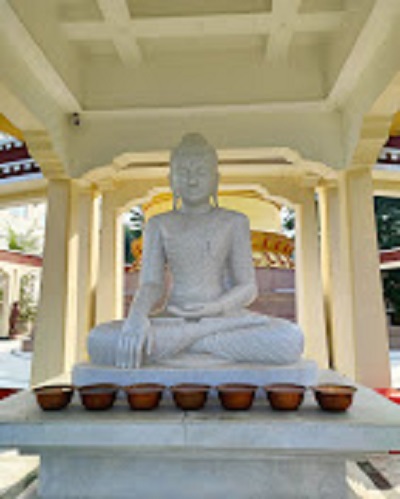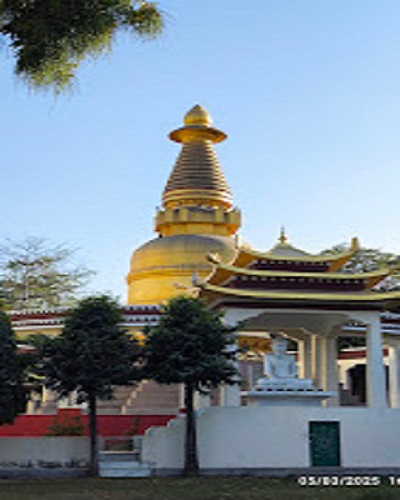Inside Area

The inside of Shechen Monastery in Bodhgaya is a blend of sacred energy, peaceful design, and traditional Tibetan craftsmanship. As you step inside, the atmosphere immediately shifts into one of calm and reflection. The main prayer hall is large, filled with soft natural light, wooden pillars, and colorful artwork. At the front of the hall are magnificent statues of Lord Buddha, Guru Padmasambhava, and Dilgo Khyentse Rinpoche, each radiating a sense of serenity and spiritual strength. The walls are covered with intricate murals, thangka paintings, and symbolic motifs that tell the story of Buddha’s life and the teachings of the Nyingma tradition. The monastery also features smaller meditation rooms, a library with a wide range of Buddhist texts in multiple languages, and well-organized monk residences. During the day, you may hear the soft chanting of mantras and witness prayer rituals conducted by the resident monks. The central courtyard allows natural light to flow into the surrounding halls, creating a space that is both spiritually and architecturally harmonious. Shechen Monastery is not just a place of worship; it is a living center of learning, meditation, and cultural preservation that welcomes visitors into its peaceful embrace.
Other Attractions
Located in the heart of Bodhgaya, Shechen Monastery is surrounded by several important spiritual and cultural sites that make the entire area a hub of Buddhist pilgrimage and global heritage. Just a few minutes away lies the sacred Mahabodhi Temple, where Lord Buddha attained enlightenment over 2,500 years ago. Adjacent to the temple is the revered Bodhi Tree, believed to be a direct descendant of the original tree under which Buddha meditated. Another key attraction nearby is the 80-feet Buddha statue, one of the tallest in India, which stands gracefully in a peaceful garden, drawing thousands of visitors for its majestic presence. The area is dotted with international monasteries built by countries such as Japan, Thailand, Tibet, Bhutan, Vietnam, and China — each reflecting unique cultural styles and Buddhist traditions. Pilgrims can also visit the Sujata Stupa, dedicated to the village girl Sujata who offered food to Buddha before his enlightenment. The Archaeological Museum of Bodhgaya provides deeper historical insight into Buddhist art and culture. Visitors can also explore meditation parks, local craft stalls, and tea shops that add a homely charm to the experience. Together, these attractions create a rich, immersive environment of peace, learning, and devotion around Shechen Monastery.

Distance From
Gaya Railway Station
The distance from Gaya Railway Station to Shechen Monastery in Bodh Gaya is approximately 14 km,

Gaya Airport
The distance from Gaya International Airport to Shechen Monastery in Bodh Gaya is approximately 9–10 km

Gaya Bus Stand
The distance from Gaya Bus Stand (Sikaria More) to Shechen Monastery in Bodh Gaya is approximately 15–16 km,

Our Review
Shechen Monastery in Bodhgaya is truly a hidden gem for those seeking peace, learning, and authentic Tibetan Buddhist culture. The monastery's serene environment immediately calms the mind, while its traditional Tibetan architecture and vibrant wall art reflect deep spiritual richness. Inside, the beautifully maintained prayer hall—with statues of Buddha, Guru Padmasambhava, and Dilgo Khyentse Rinpoche—offers a powerful spiritual presence. The chanting of monks creates a soothing atmosphere ideal for meditation and reflection. We were especially impressed by the cleanliness, simplicity, and the genuine hospitality of the resident monks. Surrounded by other sacred sites and global monasteries, Shechen Monastery stands out as a living center of wisdom, compassion, and cultural preservation. Whether you're a pilgrim, tourist, or a seeker of peace, a visit to Shechen Monastery leaves a lasting impression on the heart and mind.
